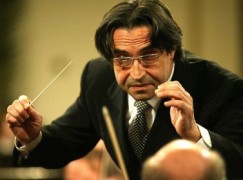The most expensive batons in America
mainThe new list of maestro earnings from Drew McManus reveals the following pay scale.
1 Jaap Van Zweden, Dallas, $5m (see here)
2 Riccardo Muti, Chicago Symphony $2,309,837
3 Christoph Eschenbach, NSO, $2,274,151
4 Michael Tilson Thomas, San Franc Symphony, $2,105,920
5 Alan Gilbert, NY, $1,751,570
6 Gustavo Dudamel, LA Phil, $1,661,493
7 David Robertson, St Louis Symphony $1,043,313
No other maestro crosses the million mark.
Full list here.






Comments